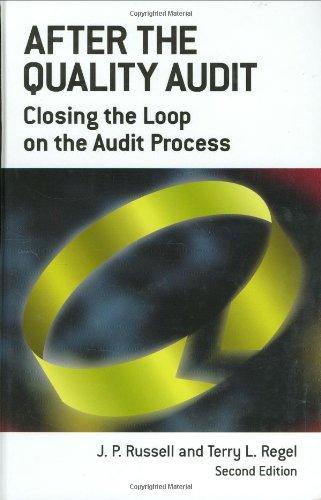Question
Cash Payback Method (Even cash flows) Suppose that a particular investment required an up-front capital outlay of $100,000. This investment is expected to yield cash
Cash Payback Method (Even cash flows)
Suppose that a particular investment required an up-front capital outlay of $100,000. This investment is expected to yield cash flows of $50,000 per year for 10 years. What is the payback period for this investment? If required, round your answer to two decimal places.
Cash Payback Period = $ / $ = years
Feedback
Formula: Cash Payback Period = Initial Investment/Annual Cash Flow
Payback Period (Uneven cash flows)
When the annual cash flows are unequal, the payback period is computed by adding the annual cash flows until such time as the original investment is recovered. If a fraction of a year is needed, it is assumed that cash flows occur evenly within each year.
The steps for determining the payback period with uneven cash flows is as follows:
- Add the annual cash flows to one another until the investment is recovered.
- For each full year's worth of cash flows consumed, add that year to your calculation for total payback years.
- If you arrive at a point where only part of the year's cash flows are needed, only add the fraction of the year's cash flows relevant to recovering the initial investment to the total payback years.
- If the unrecovered investment is greater than the annual cash flow, the payback period is "1". If the unrecovered investment is less than the annual cash flow the time needed for payback is computed by dividing the unrecovered investment by the annual cash flow for than year.
| + Explanation of Time Needed for Payback with uneven cash flows Note: For each year in which the unrecovered investment meets or exceeds the annual cash flow, this is 1. For years in which the annual cash flow exceeds the unrecovered investment, this is the unrecovered investment divided by the annual cash flow for that year.
| |||||||||||||||||||||||||||||
Compute the time needed for payback for the following example assuming the investment required an up-front capital outlay of $100,000 and the uneven annual cash flows for each year are provided in the table. If an amount is zero, enter "0". For the time needed for payback, enter your answer to one decimal place, if less than one year (i.e. 0.2, 0.5, etc.).
| Year | Unrecovered Investment (Beginning of year) | Annual Cash Flow | Time Needed for Payback | ||
| 1 | $100,000 | $20,000 | 1 year | ||
| 2 | 30,000 | ||||
| 3 | 40,000 | ||||
| 4 | 50,000 | ||||
| 5 | 60,000 | ||||
Total time needed for payback (to the nearest tenth of a year) = years
Feedback
Given the cash flow shown for each year, calculate the unrecovered investment (the amount remaining) for each year.
If the year's cash flow does not deplete the unrecovered investment, then put a "1" in the column for time needed for payback. If the cash flow depletes the entire amount, then calculate the portion of the year that the unrecovered investment will take to be depleted.
Once the unrecovered investment hits zero, leave it at zero for all remaining years.
Average Rate of Return
The average rate of return is another method that does not use present value and is commonly used in making capital investment decisions. Unlike the cash payback method, the average rate of return focuses on income rather than cash flow.
Assume that the investment involves an initial outlay of $100,000 with a five-year useful life and no salvage value under straight-line depreciation. The revenues are as follows: Year 1 - $20,000, Year 2 - $30,000, Year 3 - $40,000, Year 4 - $50,000 and Year 5 - $60,000.
Use the minus sign to indicate a net loss. If an amount is zero, enter "0".
| Year | Revenues | Expenses | Net Income | |||
| Year 1 Net Income (loss) | = | $ | - | $ | = | $ |
| Year 2 Net Income (loss) | = | - | = | |||
| Year 3 Net Income (loss) | = | - | = | |||
| Year 4 Net Income (loss) | = | - | = | |||
| Year 5 Net Income (loss) | = | - | = |
Total Net Income (five years) = $
| Average Net Income = |
| = $ |
| Average Rate of Return = |
| = % |
Step by Step Solution
There are 3 Steps involved in it
Step: 1

Get Instant Access to Expert-Tailored Solutions
See step-by-step solutions with expert insights and AI powered tools for academic success
Step: 2

Step: 3

Ace Your Homework with AI
Get the answers you need in no time with our AI-driven, step-by-step assistance
Get Started


